Redbud care and growing guide: tips for healthy cercis trees and shrubs
Learn how to grow redbud and you can enjoy their dazzling color and structure in your plot

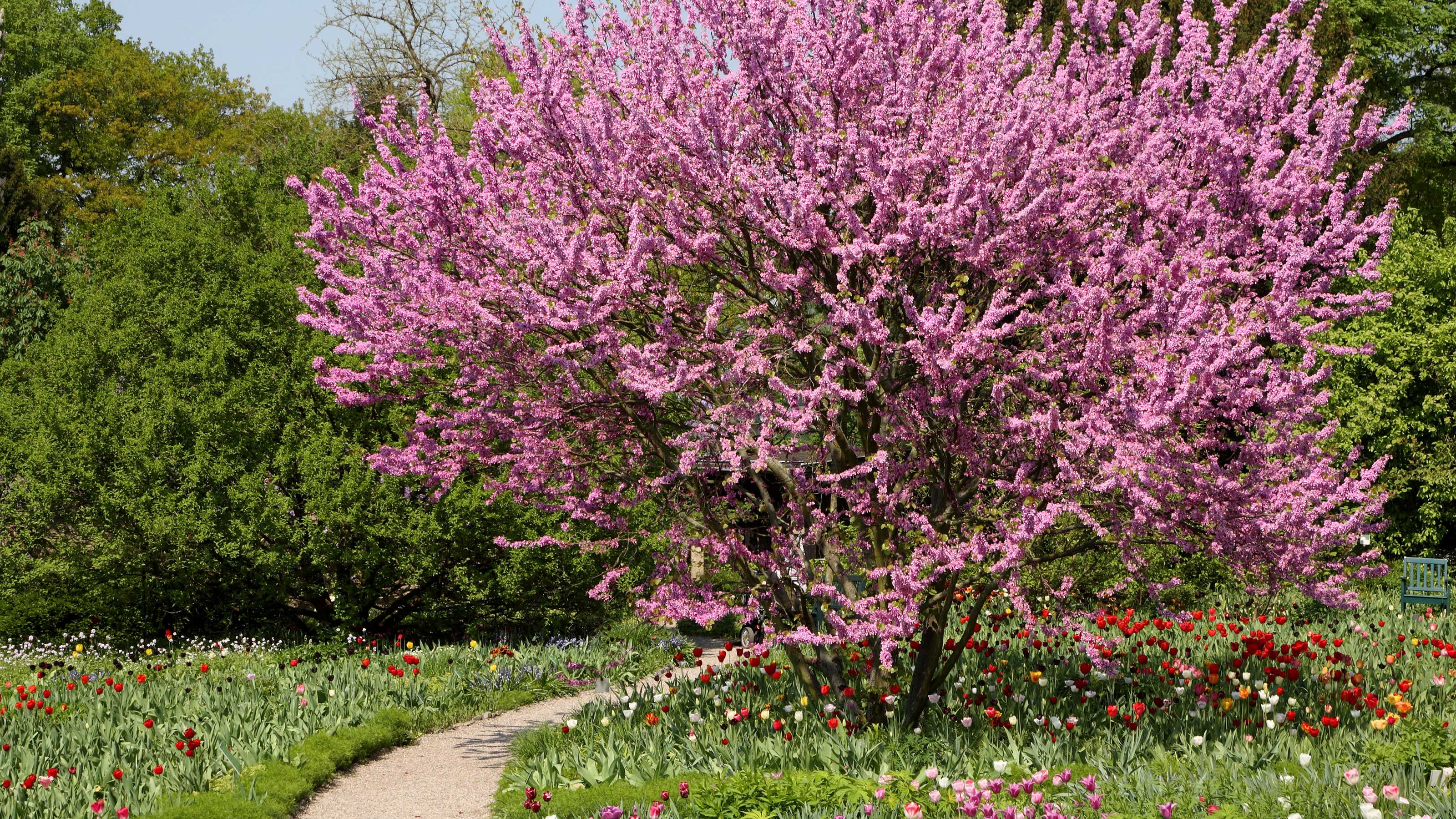
Redbud trees, also known as cercis trees, are small and deciduous. Shrub varieties are large, usually well-branched, and do not develop trunks.
They are named for the bright red coloring of their unopened flower buds. The blooms themselves are very unusual in that they are carried in tight clusters on the bare branches and on the trunk. These flowers are the same shape as pea flowers and come in a variety of magenta, red, purple, or pink shades, as well as white.
The flowers are followed by green pods that are about the same size and shape as pea pods. They develop purplish tones as they mature, at the same time as the leaves develop. Then, as they dry, the pods turn brown to create an unusual shaggy look and they rustle gently in the breeze. These pods are the origin of one of the tree's common names – the pea pod tree. The foliage is usually heart-shaped and often colors brightly in fall. A few varieties have purple or golden leaves all summer.
Overall, redbuds are easy to grow, demand no special treatment, and are ideal if you're looking for trees for small gardens.
What are the main types of redbud?
Redbuds are native to North America, northern Europe, and China. There are four main types of these beautiful flowering trees or shrubs.
- Eastern redbud (Cercis canadensis): This is an adaptable large shrub or small deciduous tree eventually reaching 20–30ft (6–9m). It is native in the east and south of the US, from Ontario south and west round to Texas. Its clusters of dark pink buds remain colorful, but closed, for several weeks before the pink pea-like flowers open. In fall, the foliage turns buttery. This is the redbud seen most often. In terms of hardiness, it suits USDA zones 3–9 (UK H5).
- Western redbud (Cercis occidentalis): This western equivalent of the rather similar eastern redbud is seen much less often, but is useful in the west for its exceptional tolerance of drought. It is also distinguished by its smaller size; 12–15ft (3.5–4.5m) and darker flowers that have a purplish tint. Suits USDA zones 6–9 (UK H5).
- Chinese redbud (Cercis chinensis): The Chinese redbud usually develops into a multi-branched shrub with white or pale pink flowers and is increasingly seen as new varieties are developed. However, it is smaller at 10–12ft (3–3.5m) and much less hardy than the native species. Suits USDA zones 7–9 (UK H5).
- Judas tree (Cercis siliquastrum): This European species is the tallest of the redbuds at 30–40ft (9–12m) and has become known as the Judas tree. The name is probably a corruption of 'Judea Tree', describing the area in which it grows wild. Its rosy mauve flowers are followed by purple-tinted seedpods that bring a second season of color in summer. USDA 6-9 (UK H5).
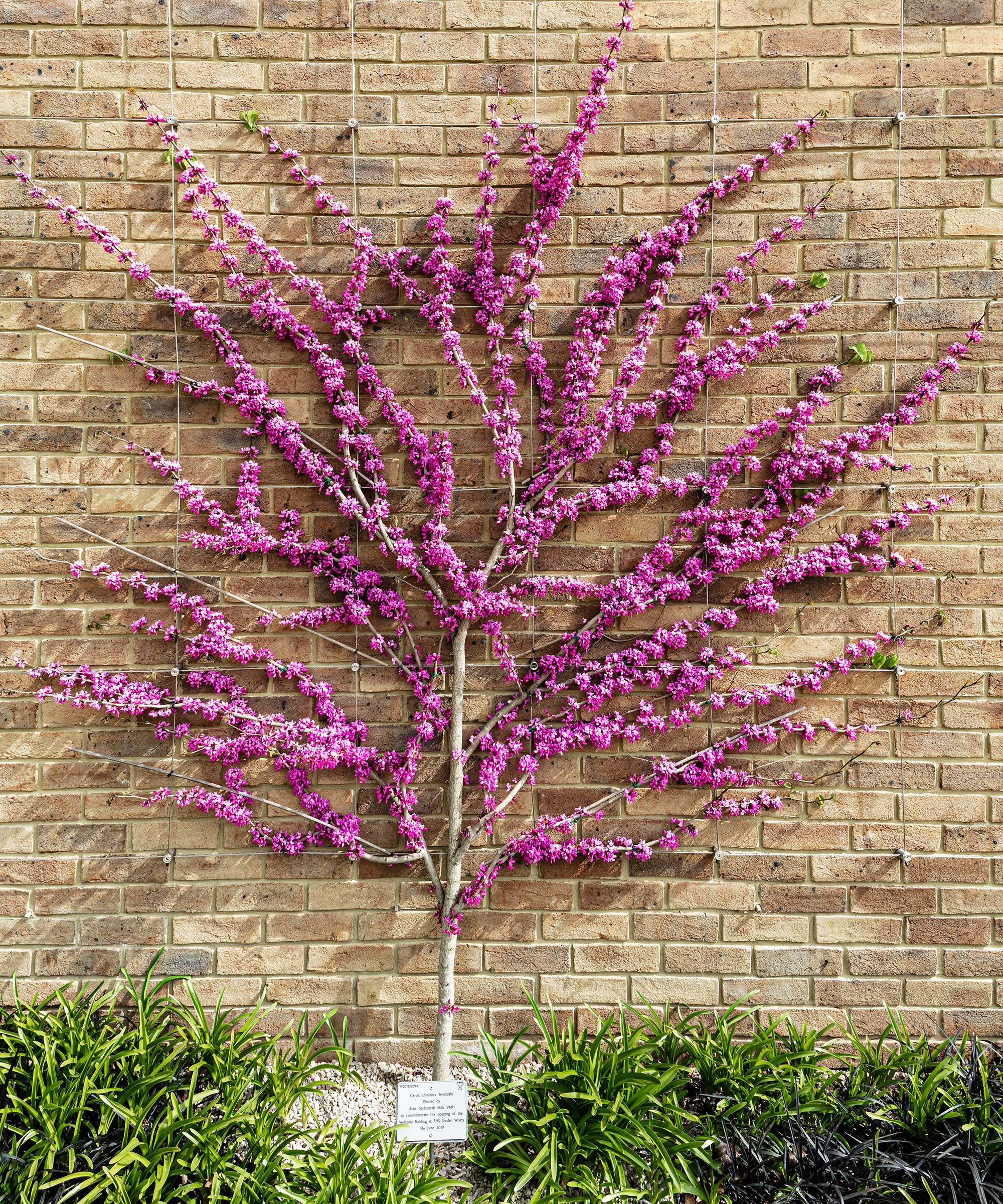
Two small, weeping varieties of eastern redbud stand out and make splendid specimens that are full of character in small spaces – even in large planters. 'Lavender Twist' ('Covey') has prolific lavender-pink flowers, while 'Ruby Falls' has rich purple foliage.
Others with especially attractive summer-long foliage are 'Forest Pansy', in deep purple-red, while 'Hearts of Gold' has orange, heart-shaped leaves that turn golden. 'Texas White' has white flowers that shine brightly against the dark bark.
In the Chinese redbuds, two varieties impress. 'Avondale' is unusually prolific with deep purple buds and pink flowers, while 'Don Egolf' is tightly compact and slow-growing: perfect for a small garden idea.
Finally, one variety of the Judas tree is worth considering: 'Bodnant', with rich purple flowers, but this is rarely offered in North America.
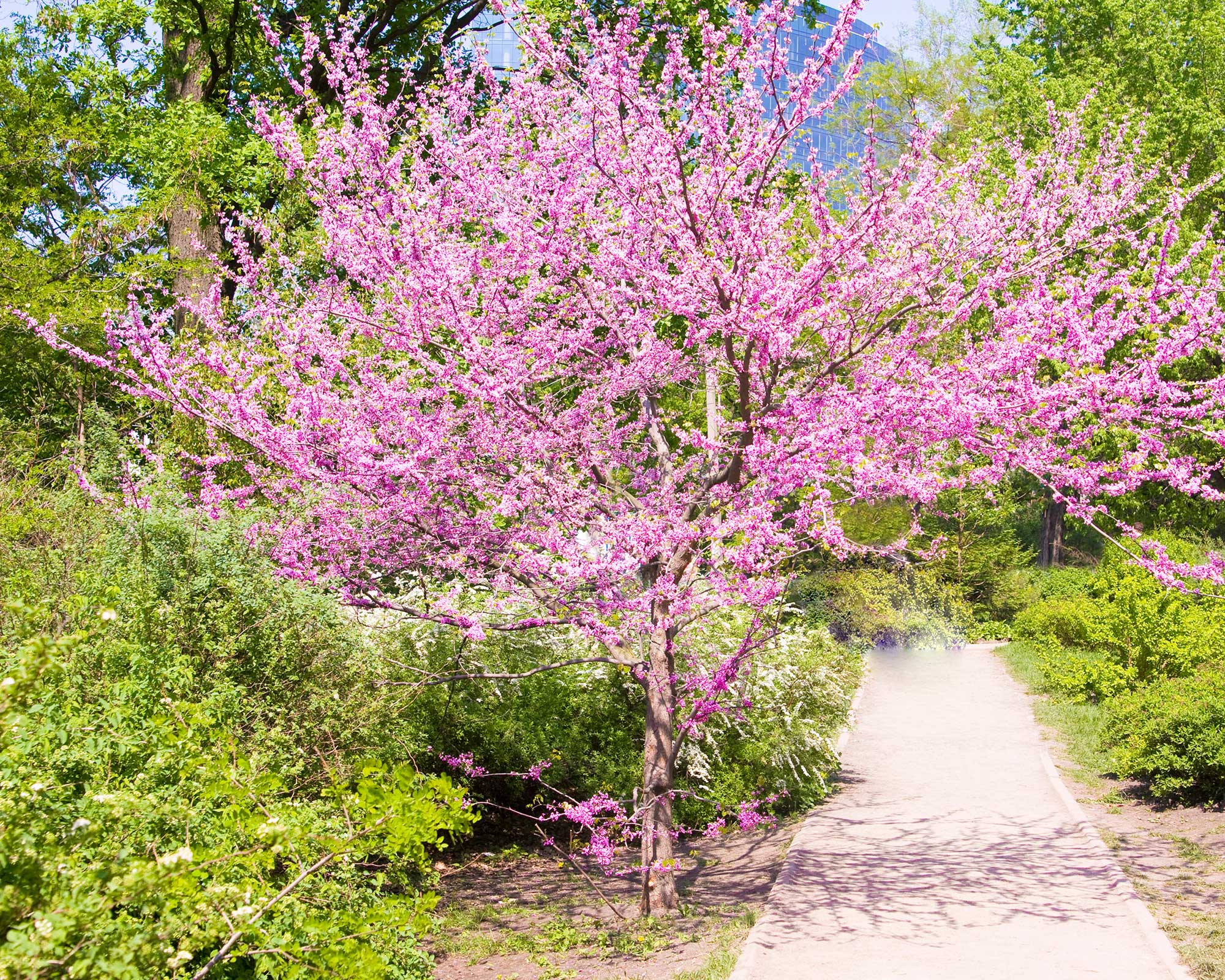
When and where to plant redbuds
Plant your redbud in fall or in spring. In USDA zone 8 and zone 9, redbuds can also be planted in winter, but not when the ground is frozen or waterlogged.
Eastern redbud is very frost-hardy (USDA Zone 3–9/H5), so it can be planted with confidence over much of the country. Most redbuds enjoy plenty of sunshine and humus-rich soil with good drainage. However, the eastern redbud also does well in dappled shade, reflecting the fact that in the wild it often grows in thin forests and in other soils.
Although drought-tolerant and enjoying sunshine, if you're learning how to grow redbud as a tree for a pot, it pays not to stress the plant too much. Choose a partially shaded site – on a sunny patio it will dry out quickly in the fierce light. Water and feed regularly.
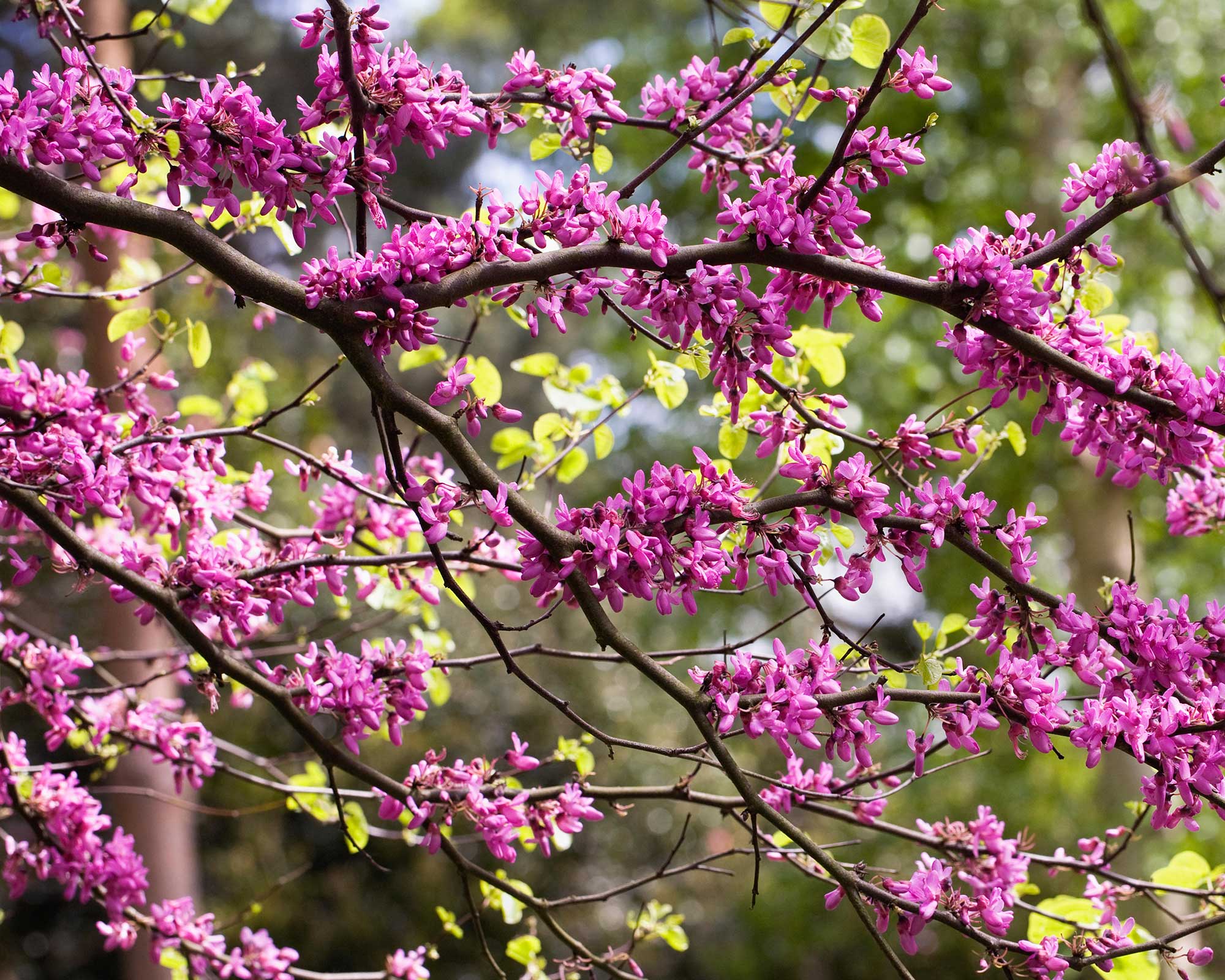
How to plant redbuds
Redbuds do not need any special planting technique. But, because their roots are relatively shallow and spread widely rather than grow strongly down into the soil, a wide planting hole is advisable while a deep one is unnecessary.
- Dig a hole 2–3ft (60–90cm) wide, but not much deeper than the container in which the plant comes. This will suit even a small plant and provide good growing conditions for many years.
- Amend the soil taken from the hole with garden compost or soil conditioner.
- Place the plant in the hole so that surface of the potting mix is about the same level as the surrounding area.
- Refill with soil, firm in well, water in with a liquid feed, then mulch with weed-free compost or bark.
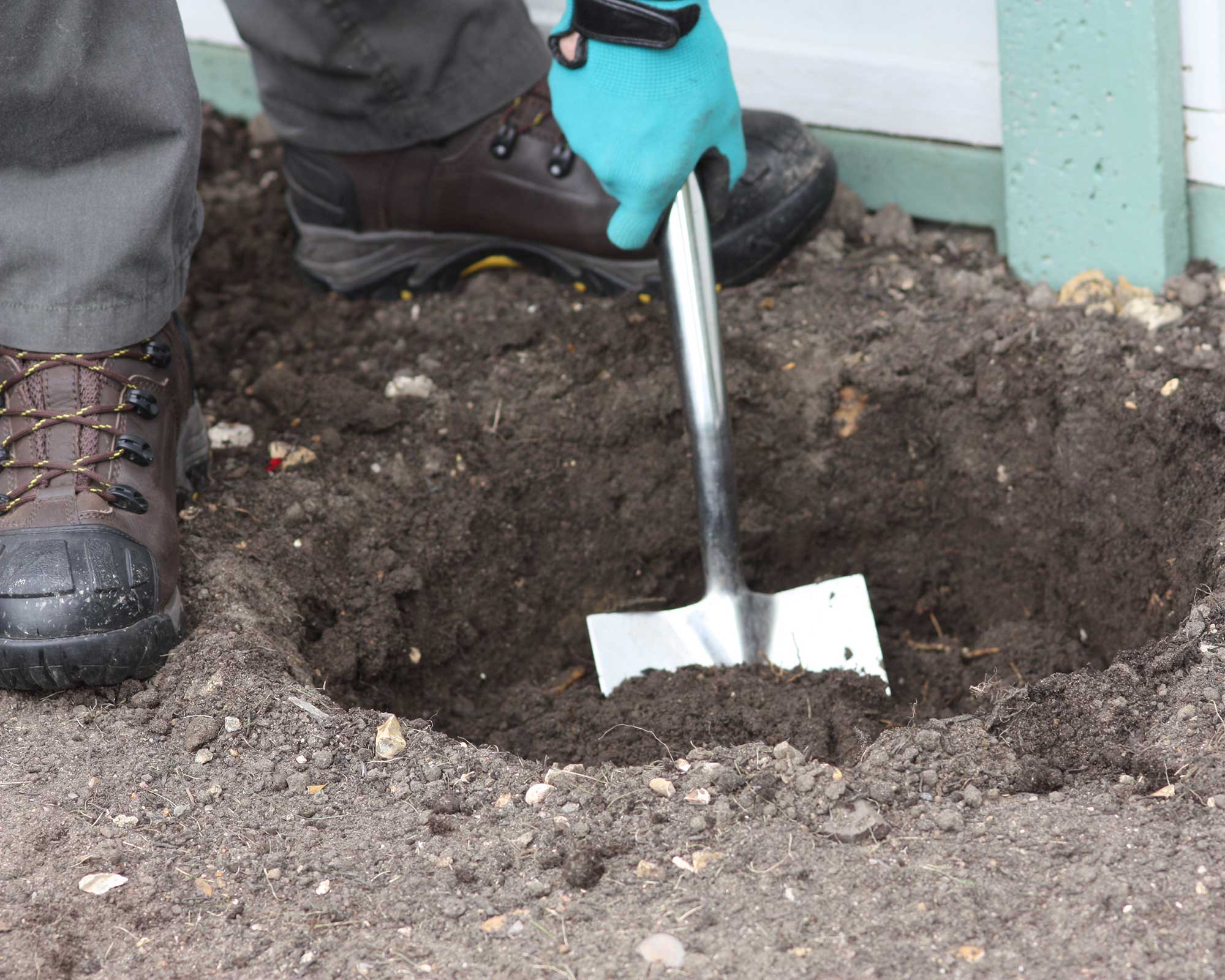
How to care for redbuds
Cercis care is simple, meaning they're great if you're on the lookout for low maintenance garden ideas.
In the year or two after planting, while the roots are spreading and building up their capacity to provide the tree with moisture, it's a good idea to irrigate in dry periods. Once established, redbuds are more drought tolerant than most shrubs and small trees, but keeping your redbud growing well and lowering stress helps the tree defend itself against pests and diseases.
An annual treatment of dry general-purpose fertilizer helps good growth. Mulching each fall is also wise, as it will help to prevent weed growth and retain moisture. Keep the mulch two or three inches from the stem.
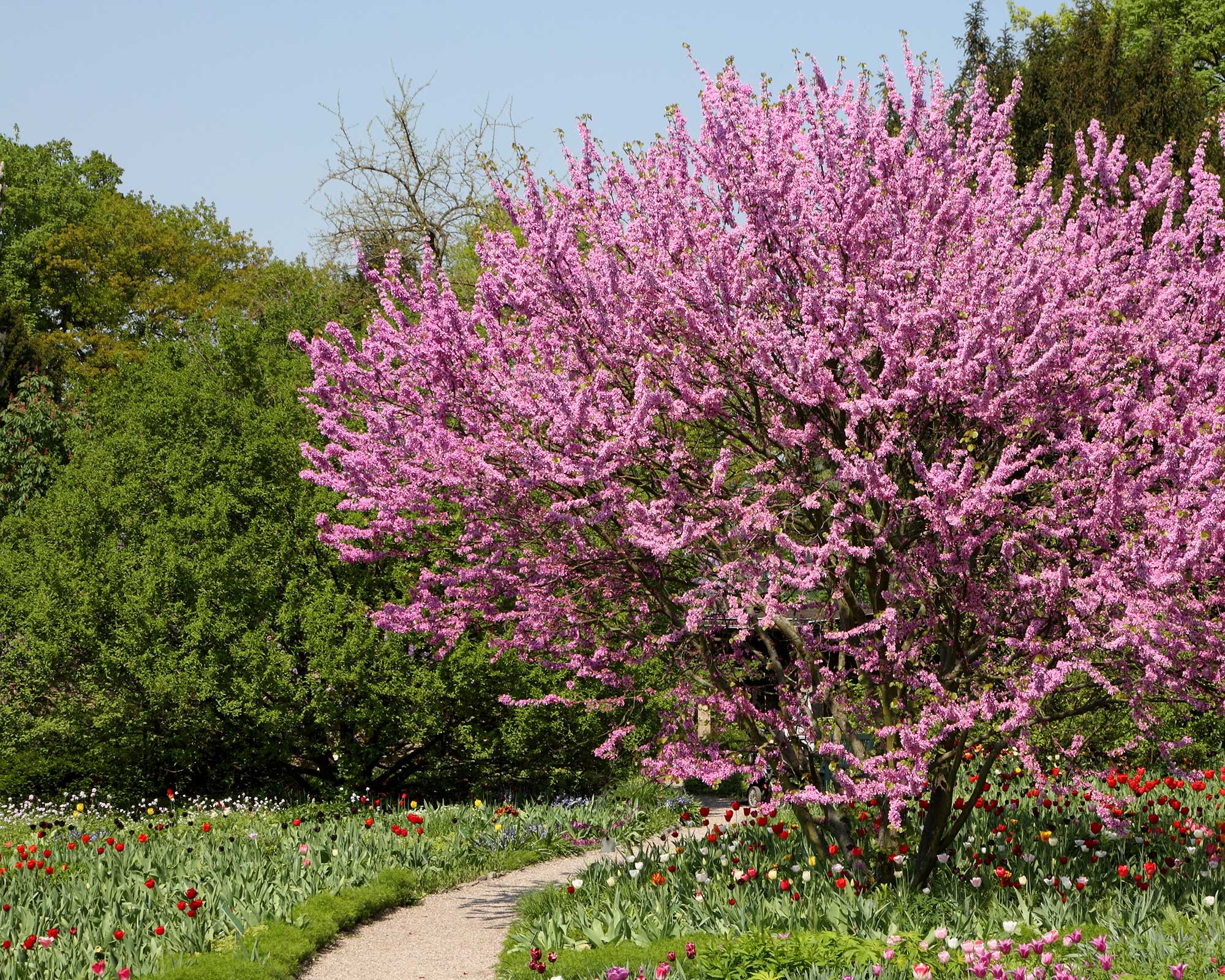
Common problems with redbud and how to solve them
Redbuds can suffer from a number of fungus diseases. Prevention is far easier than cure.
Canker causes shoots to wilt and dead areas to spread on the branches. It often enters through wounds, so avoid damage to the trunk or branches. In particular, avoid injuring the trunks of mature trees when mowing or using a string trimmer. Cut out the infected area promptly.
Wilt infects the roots and, again, parts of the tree simply collapse and die. Be sure to remove dead trees to prevent further infection.
Sap-sucking or leaf chewing insects can sometimes cause damage but this is rarely serious and no special treatment is usually necessary.
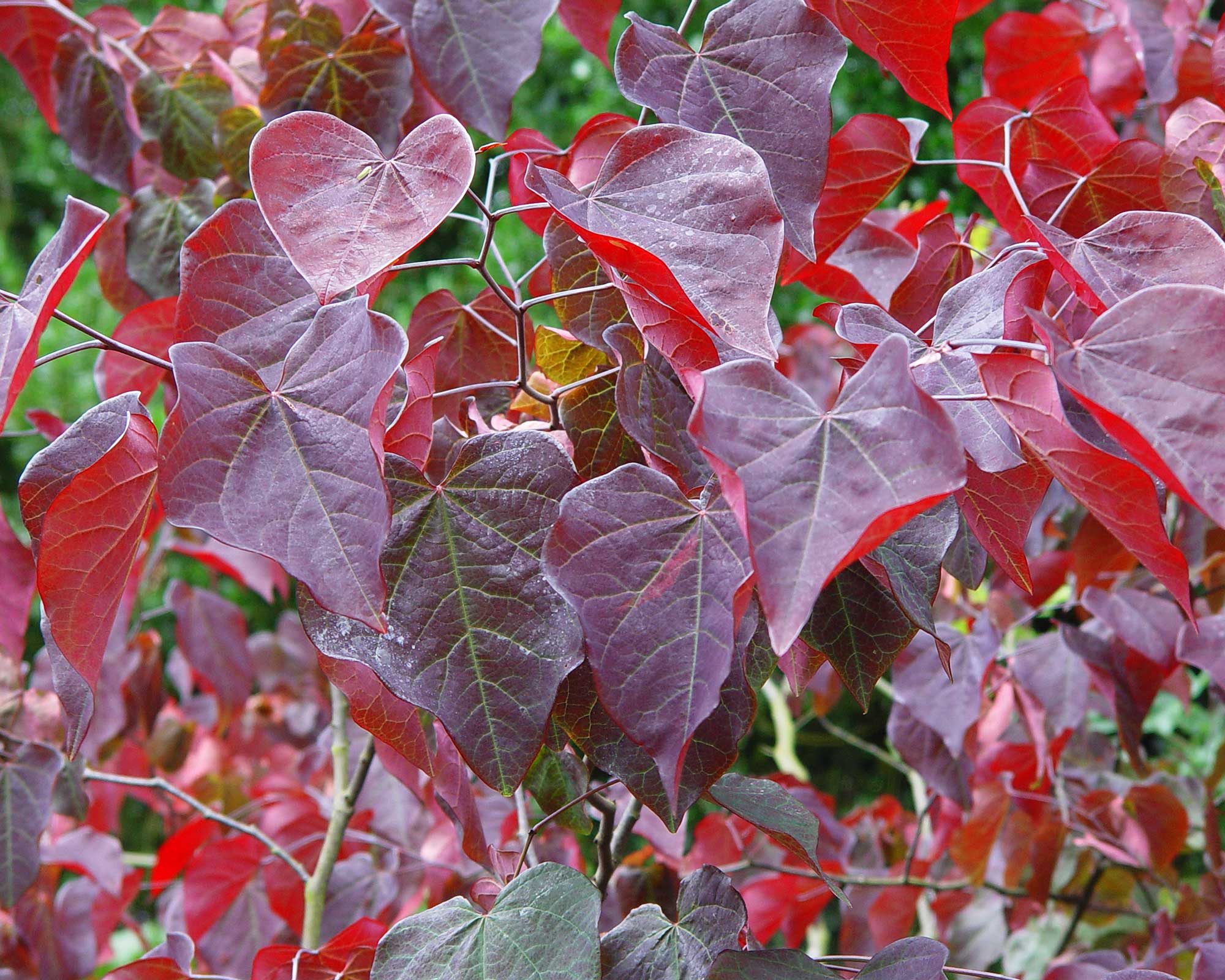
How to propagate redbuds
Learning how to take cuttings from plants is a wonderful way to grow new ones for free. But, unfortunately, redbuds are not easy to propagate in this way. They can, however, be grown from seeds. This is a slow, although economical, approach if you need more than one or two plants. Bear in mind that plants grown from seed may be a little different from the parent.
You can buy seeds or you can collect your own seeds from a redbud in your yard by following these steps:
- Wait for the pods to dry and turn brown, then snip them off and take them indoors to finish drying out. Separate the little beans from the pods, put them in boiling water for a minute, then use a kitchen sieve to remove them.
- Mix the seeds with a 50:50 blend of sand and potting mix, and put them in a plastic container in the top of the fridge for six to eight weeks.
- Fill a cell tray with potting mix and then sow one seed in each cell and stand them in a sheltered place outside. Protect from mice.
- When the seeds have germinated, move them into small pots and plant out or pot on when they're 6–12in (15–30cm) high.
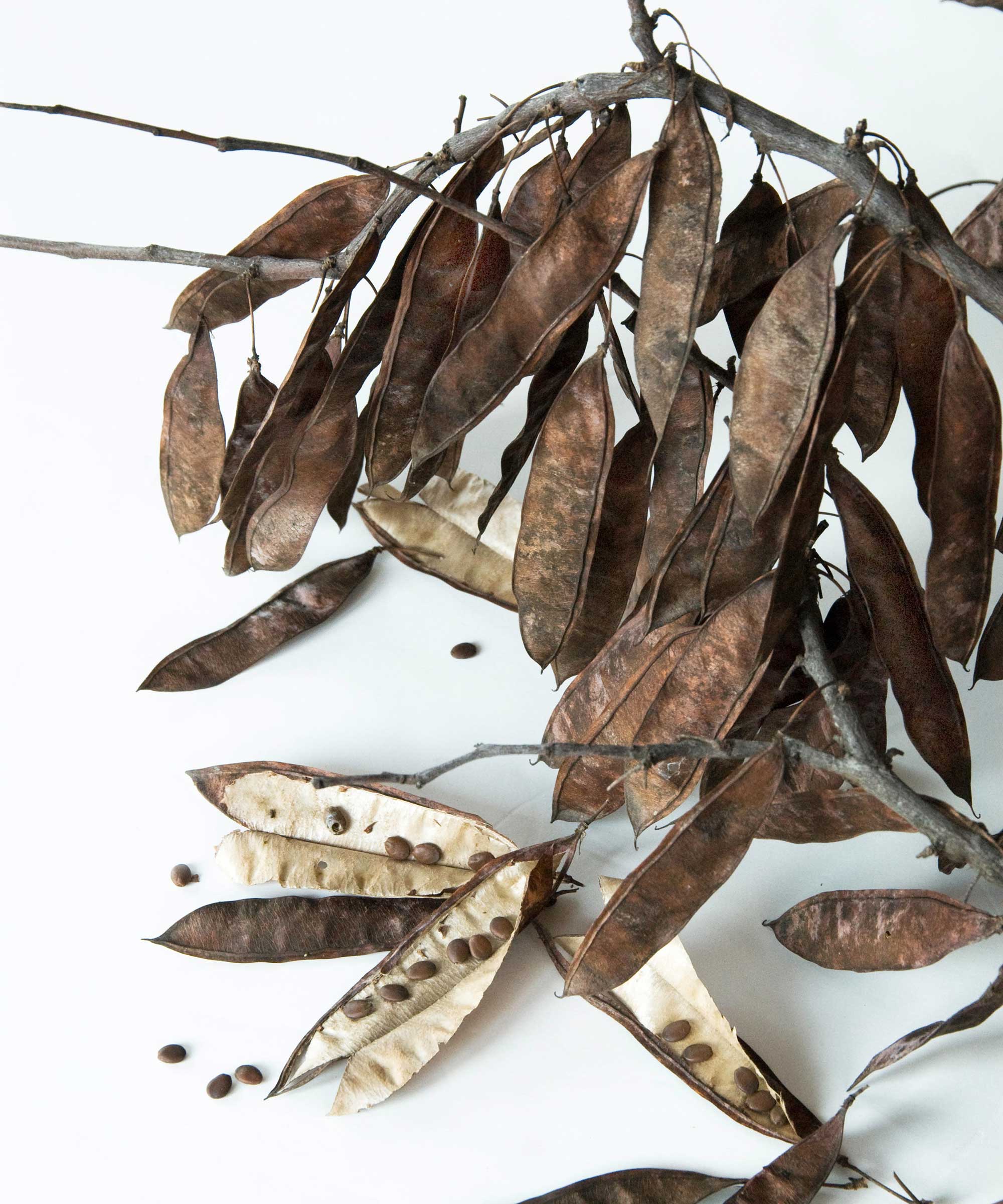
Do redbuds need pruning?
Many redbuds do well with no pruning at all, but pruning can be an important part of disease prevention.
As your newly-planted redbud is settling in and developing, check that there are no branches rubbing up against each other. This can create wounds – entry points for disease. Where two shoots rub together, grab your best secateurs or loppers and snip out the smaller. Trim back any damaged or broken branches to just in front of healthy growth.
Sometimes, low, almost-horizontal branches develop which impede mowing under specimens planted in grass or prevent planting underneath. Branches that could cause problems of this sort are best cut out when still young.
Finally, if your redbud is badly damaged – in a storm perhaps – it can be rejuvenated by cutting it back hard in spring. This risks allowing canker in through the wounds, but if not infected, re-growth can be very strong.
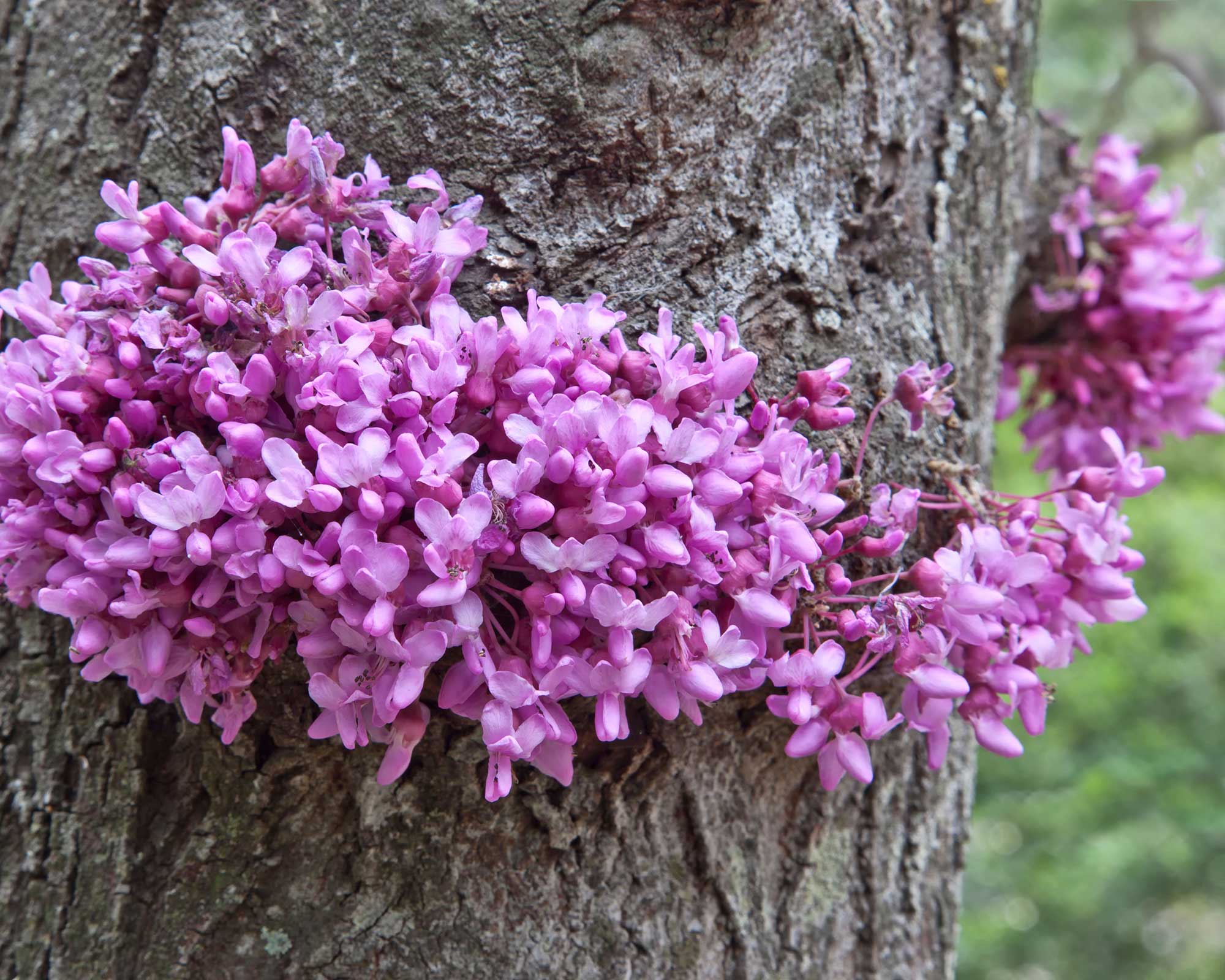
Where to buy redbuds
Now you've got the know-how on redbud care, you may fancy planting one in your own backyard.
For a garden specimen, choose a pot grown, named variety in a larger size. Redbuds are not quick-growing, so buy the largest – six-gallon size, perhaps – that suits your budget. Alternatively, choosing smaller plants in tubes is an economical way to buy a choice named variety.
Bare root plants are sometimes offered via mail order. These are plants dug up from the nursery with most of the soil knocked off for shipping. They take more careful initial care than pot-grown plants.
Garden centers and retail nurseries sometimes offer large potted specimens but there may be little or no choice of variety. For large-scale naturalistic plantings, unnamed seedlings from 6in (15cm) to 5ft (1.5m) tall are often available.
We've rounded up some top stockists of redbuds so you can start your search easily:
Where to buy redbuds in the US:
- Shop redbuds at Amazon
- Shop redbuds at Forest Farm
- Shop redbuds at Monrovia
- Shop redbuds at Naturehills
Where to buy redbuds in the UK:

Graham Rice is a garden writer who has won awards for his work online, and in books and magazines, on both sides of the Atlantic. He is a member of a number of Royal Horticultural Society committees and the recipient of the 2021 Garden Media Guild Lifetime Achievement Award.
